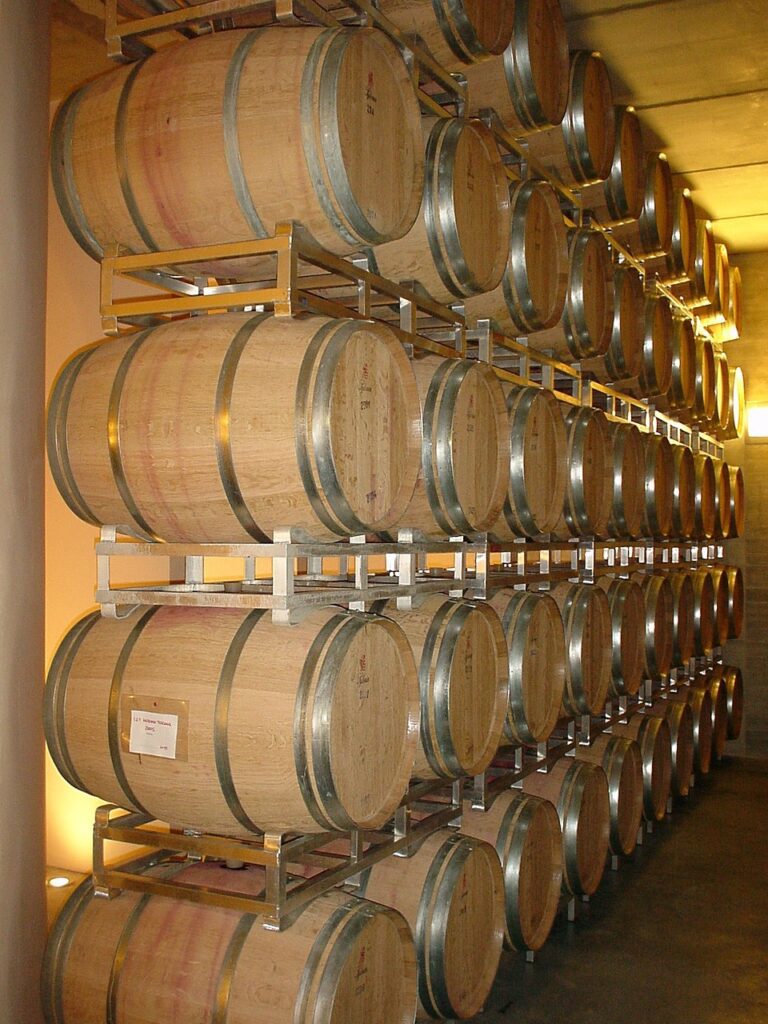
ILLUSTRATION: Shutterstock.
Who did what?
Australian researchers found that acrylic-acid-based plasma polymer coated magnetic nanoparticles can effectively protein stabilise white wines.
Why was this investigated?
Currently mostly white wines are treated with bentonite before bottling. This is to prevent a protein haze from forming as a result of elevated temperatures during storing and transport. Bentonite, although fairly inexpensive, can potentially alter a wine’s chemical and sensory characteristics. In addition it is a clay, which when it settles, contains some wine in its lees. It is estimated that 3 – 20% of wine volume is lost with bentonite lees. Bentonite is also not recyclable and there are labour and waste disposal issues. As a result, research for an alternative to bentonite has been ongoing for the past 30 years.
What causes protein instability?
Grape juice and resulting wines contain many different proteins in various concentrations (anywhere from 10 – 400 mg/L in total). Not all of them become unstable and form a haze under the conditions that wines are exposed to during their lifetimes. In fact, it is only the so-called pathogenesis-related (PR) proteins, with their low denaturation temperatures that are the culprits. These proteins are fairly small and compact with a globular structure. The two main types are chitinases and thaumatin-like proteins (TLPs). Chitinases are more sensitive than TLPs to elevated temperatures (above 40°C). Once its globular structure has unfolded (denatured), it is not possible to refold if conditions become favourable again, i.e. the ship moves further away from the equator. Some TLPs, on the other hand, can refold. Unfolded proteins can attract each other to form an aggregate, which eventually becomes big enough to be visible to the naked eye and thus the dreaded haze is formed.
Exactly how does this magnetic separation technology work?
Magnetic nanoparticles (MNPs), consisting of stainless steel and coated with an acrylic-acid polymer, are added to wine. These coated MNPs have a weak negative charge at wine pH. Wine proteins, and especially the PR proteins, are positively charged and bind to the negatively charged coating. The MNPs are then removed from the wine with a magnet. In the latest research article on the topic a dosage of 1.7 vol.% MNPs that relates to 13 g/L was used in 50 mL unfined Sauvignon blanc, Sémillon and Chardonnay. The centrifuge tubes containing the wine and MNPs were mixed for 30 minutes. Previous research indicated that binding of the PR proteins on the coated MNPs can be completed within 10 minutes. This will be a significant process improvement for the wine industry if it can be upscaled.
Has this been done on large scale, i.e. real cellar settings?
No. This research is still in the proof of concept phase. A concept that has been proven to work. The challenge is now to upscale the process and see how it can be made economically viable. The most recent research looked at the regeneration of the MNPs after it’s been used to remove PR proteins. The researchers washed the MNPs with three different solvents and found that a 10% SDS/water followed by a plain water wash, showed the highest protein removal efficiency. After 10 successive adsorption-desorption processes, the MNPs still showed very high protein removal capacity. This is an advantage over bentonite that can be used only once.
Does this method of protein stabilisation have any effect on wine chemistry and sensory?
In terms of sensory it’s difficult to give a conclusive answer at this point since the researchers have not performed sensory analysis on the experimental wines in the two research projects studied for this article. Treatment has been on very small scale (50 mL in the case of the most recent research). The 2020 published study investigated the effect of the coated MNP’s on wine proteins, phenolics, major acids and metals. There was no impact of the treatment on wine phenolics or the major acids. All PR proteins were removed. The treatment also had a very surprising effect on wine metals in that it removed potassium (up to 80%) and calcium. It could just be that these MNPs can perform protein and tartrate stabilisation at the same time. Unfortunately, there was no effect on the iron (Fe) and copper (Cu) concentrations, which influence oxidation and reduction reactions in wines. No other wine compounds were investigated.
So where to now?
This research paves the way for MNP-based separation technology, to protein and potentially tartrate stabilise wines, to be developed. The process will have to be practically executable on large scale in a cellar environment. The process will also have to be economically viable compared to bentonite usage. Most importantly, however, the product will have to be safe for use in that there must be no magnetic particles left in the final wines. If such a process is indeed developed, it will have to pass OIV-, as well as EU regulatory approval, in order for it to become legal for use in European countries. OIV member states outside of the EU will also have to apply for local legislation approval in their countries.
Important disclaimer
Winetech did not develop this product and therefore cannot guarantee any results claimed by the manufacturers in the use of this product. Winetech cannot be held liable for the use of this product in any regard.
Where can I find out more?
- Mierczynska-Vasilev, A., Boyer, P., Vasilev, K. & Smith, O.A., 2017. A novel technology for the rapid, selective, magnetic removal of pathogenesis-related proteins from wines. Food Chemistry 232, p. 508 – 514. https://doi.org/10.1016/j.foodchem.2017.04.050
- Mierczynska-Vasilev, A., Qi, G., Smith, P., Bindon, K. & Vasilev, K., 2019. Regeneration of magnetic nanoparticles used in the removal of pathogenesis-related proteins from white wines. Foods (Basel, Switzerland) 9(1), p. 1 – 13. https://doi.org/10.3390/foods9010001
- O’Kennedy, K., 2015. The causes of protein instability in white wine. WineLand Media: https://wineland.co.za/the-causes-of-protein-instability-in-white-wine/
- Marangon, M. New tools for white wine protein stabilization. http://www.acenologia.com/english/new_tools_cienc1017.htm
- Raise your glass: New nanotech clears haze from white wine. https://scienmag.com/raise-your-glass-new-nanotech-clears-haze-from-white-wine/
– For more information, contact Karien O’Kennedy at karien@winetech.co.za.













